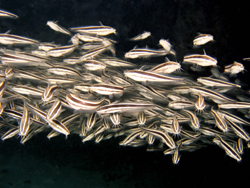Recycling waste from fish farms
The ZAFIRA project combined Western recycling technology with traditional Chinese aquaculture techniques. It designed a fish farm that would discharge zero nutrients and used bacteria to produce single cell protein. The project's aim was to find a viable way to recycle waste from catfish farms. An innovative, integrated system of aquaculture was developed which minimised water use and the discharge of waste and nutrients to the environment. Waste from a pilot-scale fish farming unit was studied for its suitability as a substrate for heterotrophic bacteria production. By supplementing the substrate, firstly with sodium acetate as a reference and then molasses, bacteria production increased substantially. This method not only converted the solid waste but also 90-95% of the dissolved nitrogen and phosphorous. Researchers also studied other limiting factors such as carbon supplementation levels, different sources of nitrogen and variations in hydraulic retention times. The bacterial product was analysed and its potential as an aquatic feed was investigated. The final part of the project concentrated on the hypothetical reactor design for a 100 metric tonne African catfish farm. Experiments undertaken by the researchers indicated that the production of bacteria biomass from solid waste originating from fish was feasible. However, given the current level of knowledge it would only be economic at small volumes.

